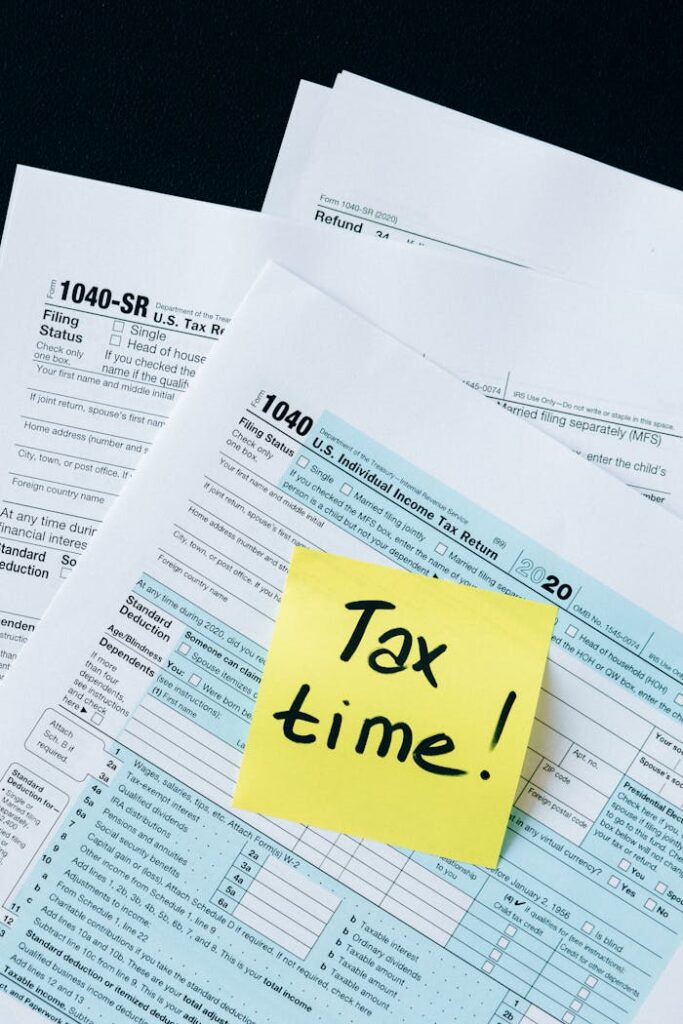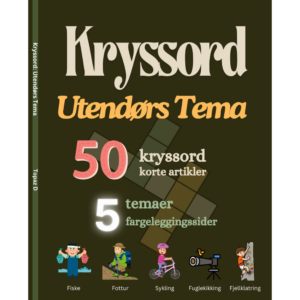
Explore & Play
Discover interesting topics and solve the accompanying crossword puzzle.
Fee Crossword: Explore Norway’s Tax System
Table of Contents
In this blog post, you’ll find an engaging Fee crossword at the beginning, inviting you to test your knowledge on fees, taxes, and duties in Norway. You can choose to tackle the crossword first for a fun challenge or dive into the article for a deeper understanding of the topic before returning to play. Whichever approach you take, we hope you enjoy exploring the complexities of Norway’s tax system!
Fee crossword
You can either fill in the crossword puzzle directly on this page or click the button in the bottom right corner to print it for free.

Understanding Norway's Tax System: A Comprehensive Overview of Fees and Duties
Norway’s tax system is intricate, comprising various fees, taxes, and duties that fund essential public services and maintain the country’s welfare state. Understanding these elements is crucial for both residents and newcomers, as they directly impact financial obligations and everyday life. In this article, we will explore the various components of Norway’s tax system, ensuring you have a clear grasp of what to expect. Additionally, we’ll touch on a fun crossword puzzle related to fees and duties, inviting you to engage with the topic interactively.
I. Overview of Norway’s Tax Structure
Norway’s tax structure is designed to ensure equitable distribution of wealth while promoting economic stability. At its core, the system is divided into several categories, including income taxes, property taxes, consumption taxes, environmental taxes, and specific fees. Understanding the framework helps demystify the obligations that come with living and working in Norway.
Taxes in Norway can broadly be classified into direct and indirect taxes. Direct taxes, such as income tax and corporate tax, are levied directly on individuals and businesses. In contrast, indirect taxes, including VAT and excise duties, are imposed on goods and services. This dual system allows for a balanced approach to revenue collection, ensuring that both individuals and businesses contribute fairly to the national budget.
II. Income Taxes
Income taxes are one of the primary sources of revenue for the Norwegian government, contributing significantly to funding public services and infrastructure. These taxes are levied on individuals and corporations, with rates that vary based on income levels.
A. Personal Income Tax
Norwegian personal income tax is structured progressively, meaning that as a person’s income increases, so does the tax rate applied to it. The tax is collected at both national and municipal levels, with municipalities having the authority to set their own rates within certain limits.
1. Tax Brackets and Rates
The income tax system includes multiple tax brackets, which range from lower rates for individuals with minimal income to higher rates for those with substantial earnings. For instance, individuals earning below a certain threshold may pay a lower percentage, while those whose income exceeds specified limits may be subject to a higher tax rate.
2. Deductions and Allowances
Norwegian taxpayers benefit from various deductions that can reduce their taxable income. These may include deductions for expenses related to work, childcare, and interest payments on loans. Understanding these deductions is crucial for taxpayers looking to minimize their tax burden effectively.
3. Tax Credits
In addition to deductions, certain tax credits are available to taxpayers, providing further relief by directly reducing the amount of tax owed. Credits may be available for low-income earners, those caring for dependents, or individuals making investments in specific sectors.
B. Corporate Income Tax
Corporate income tax in Norway is levied on the profits of companies operating within the country. Like personal income tax, the corporate tax system is designed to support government functions and public services.
1. Flat Tax Rate
Norway imposes a flat corporate tax rate, which simplifies tax calculations for businesses. This rate applies uniformly to all corporate profits, making the system straightforward for both small enterprises and large corporations.
2. Deductions for Businesses
Corporations can deduct various expenses incurred in the course of doing business, including salaries, operational costs, and investment in research and development. This incentivizes companies to reinvest profits back into their operations, supporting growth and innovation.
3. International Considerations
With many businesses operating across borders, Norway’s corporate tax system also includes provisions for dealing with international income. Transfer pricing regulations and agreements to avoid double taxation are essential elements of this framework, ensuring fairness and compliance.
III. Property Taxes
Property taxes are another significant revenue stream for Norwegian municipalities. These taxes are assessed based on the value of real estate properties and can vary widely from one municipality to another.
A. Real Estate Tax
1. Tax Assessment
In Norway, property values are periodically assessed to determine the taxable amount. These assessments consider various factors, including location, property size, and market conditions. Homeowners may receive notifications of their property’s assessed value, which forms the basis for calculating taxes owed.
2. Tax Rates
Municipalities set their own tax rates on real estate, which can lead to differences in property tax burdens across the country. These rates typically range from a fraction of a percentage to a few percent of the assessed property value.
3. Exemptions and Reductions
Certain properties, such as those owned by non-profit organizations or historical buildings, may qualify for exemptions or reduced tax rates. Understanding these provisions is important for property owners looking to navigate their tax liabilities effectively.
B. Wealth Tax
Wealth tax in Norway is levied on individuals based on the total value of their assets, including properties, investments, and savings. This tax is separate from income tax and is meant to address wealth inequality within the country.
1. Tax Threshold
The wealth tax applies only to individuals whose net worth exceeds a specific threshold. Individuals below this threshold are exempt from the tax, making it primarily a burden for higher-net-worth individuals.
2. Valuation of Assets
Assets must be accurately valued for tax purposes, which can involve assessments for properties, stock valuations, and accounting for other investments. Taxpayers should be aware of the rules regarding asset valuation to ensure compliance.
IV. Consumption Taxes
Consumption taxes are levied on the purchase of goods and services, forming another vital component of Norway’s tax system. These taxes are primarily aimed at generating revenue while also influencing consumer behavior.
A. Value-Added Tax (VAT)
1. Overview and Rates
The Value-Added Tax (VAT) is a significant source of revenue for the Norwegian government, applied to most goods and services sold in the country. The standard VAT rate is relatively high compared to other countries, reflecting the government’s commitment to funding public services.
2. Exemptions
Certain goods and services are exempt from VAT or subject to reduced rates, such as food, healthcare, and education. Understanding these exemptions can help consumers and businesses manage their expenses effectively.
3. Impact on Prices
The VAT directly affects consumer prices, influencing spending patterns. As a result, consumers should be aware of how this tax impacts their purchasing decisions.
B. Excise Duties
1. Specific Products
Excise duties are additional taxes levied on specific goods, such as alcohol, tobacco, and fuel. These duties serve two main purposes: generating revenue and discouraging consumption of products deemed harmful.
2. Rates and Administration
Rates for excise duties vary significantly based on the product, and they are collected at various points in the supply chain. This can complicate pricing and compliance for businesses dealing in these goods.
3. Environmental Considerations
Some excise duties are specifically designed to promote environmentally friendly practices. For example, taxes on fuel can encourage consumers to opt for greener transportation options.
V. Environmental and Special Taxes
Environmental and special taxes in Norway play a crucial role in promoting sustainability and addressing specific social concerns. These taxes aim to incentivize environmentally friendly practices, fund public initiatives, and discourage harmful behaviors.
A. Carbon Tax
1. Purpose and Impact
Norway was one of the first countries to implement a carbon tax, aimed at reducing greenhouse gas emissions and combating climate change. The carbon tax applies to fossil fuels used in transportation and heating, motivating both individuals and businesses to transition to renewable energy sources.
2. Tax Rates
The carbon tax is levied per ton of CO2 emitted, with rates gradually increasing over time to encourage more significant reductions. As the tax rate rises, businesses are prompted to invest in cleaner technologies, while consumers may seek alternative energy solutions.
3. Use of Revenue
Revenue generated from the carbon tax is often reinvested in sustainable projects, such as renewable energy infrastructure and public transportation improvements. This creates a cycle where tax revenue supports initiatives that further reduce emissions.
B. Environmental Fees
1. Waste Management Fees
Norway imposes environmental fees related to waste management, which are designed to encourage recycling and reduce landfill waste. These fees are typically included in the price of products, promoting responsible consumer behavior.
2. Plastic Bag Fees
To combat plastic pollution, Norway has implemented fees on single-use plastic bags. Retailers charge consumers for bags, incentivizing shoppers to bring reusable alternatives. This has contributed to a significant reduction in plastic bag consumption.
3. Resource Extraction Fees
Fees related to natural resource extraction, such as oil and gas, are another form of environmental taxation. These fees help ensure that companies are held accountable for their environmental impact while generating revenue for public services.
VI. Specific Fees and Duties
In addition to taxes, various specific fees and duties are levied in Norway to fund government services and regulate activities. These fees can vary widely based on the service or product involved.
A. Registration Fees
1. Vehicle Registration
When purchasing a vehicle, owners must pay registration fees, which are used to maintain road infrastructure and safety programs. These fees vary depending on the type and weight of the vehicle, ensuring that larger vehicles contribute more to road maintenance.
2. Business Licensing Fees
Businesses operating in Norway are often required to pay licensing fees, which cover the costs of regulatory oversight. These fees ensure that businesses comply with safety and environmental regulations, protecting consumers and the public.
B. Import and Export Duties
1. Tariffs on Imported Goods
Norway imposes tariffs on certain imported goods to protect local industries and encourage domestic production. These tariffs vary based on the product category, influencing pricing and availability in the market.
2. Export Duties
While less common, Norway may levy export duties on specific natural resources, particularly those that are limited or valuable. These duties aim to ensure that resources are managed sustainably and that the country benefits from its natural wealth.
VII. The Role of Taxes in Public Services
Taxes play a fundamental role in funding public services in Norway, which are vital for maintaining the country’s high quality of life. The Norwegian welfare state is built on the principle that citizens contribute to the common good through taxes, and in return, they receive essential services.
A. Education Funding
1. Free Education
Norway offers free education at all levels, from primary to higher education. This is made possible through tax revenues, which cover operational costs for schools and universities. By ensuring access to education for all, Norway promotes equality and social mobility.
2. Investment in Research and Development
Taxes also support research initiatives within educational institutions. Government funding allows for the development of innovative programs and advancements in various fields, driving Norway’s competitiveness on a global scale.
B. Healthcare Services
1. Universal Healthcare
Norway’s healthcare system is funded primarily through taxes, ensuring that all citizens have access to necessary medical services without direct costs at the point of care. This system prioritizes public health and reduces inequalities in healthcare access.
2. Preventative Care Initiatives
Tax revenue is also allocated to preventative care programs, including vaccinations and health education campaigns. By focusing on prevention, Norway aims to reduce healthcare costs in the long term and improve overall population health.
C. Infrastructure Development
1. Transportation Projects
Taxes are crucial for financing infrastructure projects, including roads, bridges, and public transportation systems. Investments in transportation infrastructure enhance connectivity and promote economic growth.
2. Environmental Protection Initiatives
Revenue from taxes, particularly environmental taxes, supports initiatives aimed at protecting Norway’s natural landscapes. Funds are allocated to conservation projects, sustainable tourism, and pollution control measures, preserving the environment for future generations.
VIII. Common Misconceptions About Taxes in Norway
Misunderstandings about taxes can lead to confusion and misinformation regarding financial obligations. It is crucial to address these misconceptions to foster a better understanding of the tax system.
One common myth is that taxes in Norway are excessively high without delivering value. In reality, the services funded by these taxes—such as universal healthcare and free education—demonstrate their worth. Additionally, misconceptions about environmental taxes often overlook their purpose in promoting sustainability.
IX. Navigating the Tax System
For residents and newcomers, navigating Norway’s tax system can seem daunting but is manageable with the right knowledge. Understanding your tax obligations will empower you to make informed financial decisions.
Various resources are available to help individuals understand their tax responsibilities. The Norwegian Tax Administration provides comprehensive information online, and local tax offices can offer personalized assistance. Taking advantage of these resources can make the process less intimidating.
X. A Tax System for the Future
A solid understanding of Norway’s tax system is essential for residents and businesses alike to thrive within this prosperous society. As the country evolves, so too will its tax policies, reflecting changes in economic conditions and societal needs.
By staying informed about fees, taxes, and duties, individuals can better appreciate the services provided and contribute to the community’s well-being. Engaging with the crossword puzzle related to these fees can be a fun way to reinforce your understanding while testing your knowledge.
Share to...
I hope you enjoy the content.
Want to receive our daily crossword puzzle or article? Subscribe!
You may also be interested in
Share to…
Want to receive our daily crossword puzzle?
-
Jigsaw Puzzles
Chinese Zodiac Serpent Watercolor Jigsaw Puzzle 250 | 300 | 500 Pieces
kr 348,00 – kr 439,00Price range: kr 348,00 through kr 439,00 Select options This product has multiple variants. The options may be chosen on the product page -
Jigsaw Puzzles
Enchanting Unicorn Watercolor Jigsaw Puzzle 250 | 300 | 500 Brikker
kr 348,00 – kr 439,00Price range: kr 348,00 through kr 439,00 Select options This product has multiple variants. The options may be chosen on the product page -
Jigsaw Puzzles
Art Nouveau Jigsaw Puzzle with Playful Dog in Scenic Landscape 250 | 300 | 500 Pieces
kr 348,00 – kr 439,00Price range: kr 348,00 through kr 439,00 Select options This product has multiple variants. The options may be chosen on the product page

















